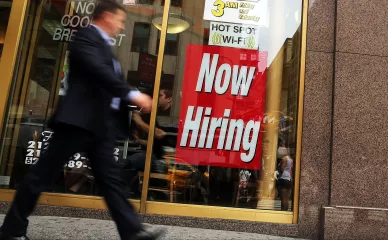- | Academic & Student Programs Academic & Student Programs
- | Government Spending Government Spending
- | Working Papers Working Papers
- |
Declining Teen Employment
Minimum Wages, Other Explanations, and Implications for Human Capital Investment
The labor force participation and employment rates of young adults in the United States have declined sharply in recent years, especially among teenagers. The overall decline in the rate of labor force participation since the Great Recession has received a great deal of attention from researchers and policymakers, who focus in large part on trying to gauge whether this decline is permanent and what it implies about how tight the labor market is. However, the decline in labor force participation of young adults has been going on for much longer and does not coincide with swings in economic activity.
David Neumark and Cortnie Shupe consider three possible explanations for the decline in teen employment in the United States since 2000, with a particular focus on those age 16–17: (1) a rising minimum wage that could reduce employment opportunities for teens and potentially also increase the value of investing in schooling; (2) rising returns to schooling; and (3) increasing competition from immigrants. The higher minimum wage is the predominant factor explaining changes in the behavior of teens age 16–17 since 2000. Additionally, no evidence was found to suggest that higher minimum wages for teens leads to higher future earnings; if anything, the evidence points to the opposite effect.
Key Points
- Prior literature shows that teen employment has declined much more than the employment rates of those age 20–24 since 2000. These changes were larger for teens age 16–17 than for those age 18–19. The percentage of teens not in the labor force who reported wanting a job fell by almost half between 1994 and 2009, from 24 percent to 13.2 percent.
- The decline in the number of teenagers in the workforce was owing to increases in teens being exclusively in school, rather than combining school and work.
- In new results presented in this paper, the authors find that higher minimum wages are associated with a lower share of teens age 16–17 both in school and employed, and a higher share in school and not employed.
- There is some evidence that changes in the return to schooling and an increase in the share of immigrants employed in the workforce may have contributed to the observed changes in employment and enrollment of teens age 16–17, although these effects are considerably smaller than the estimated minimum wage effects.
- The study found no positive relationship between higher minimum wages for teens and higher future earnings. The evidence, if anything, says that teens exposed to higher minimum wages since 2000 had acquired fewer skills in adulthood. Thus, it is more likely that the principal effect of higher minimum wages since 2000, in terms of human capital, was to reduce employment opportunities that could enhance labor market experience.
To speak with a scholar or learn more on this topic, visit our contact page.


